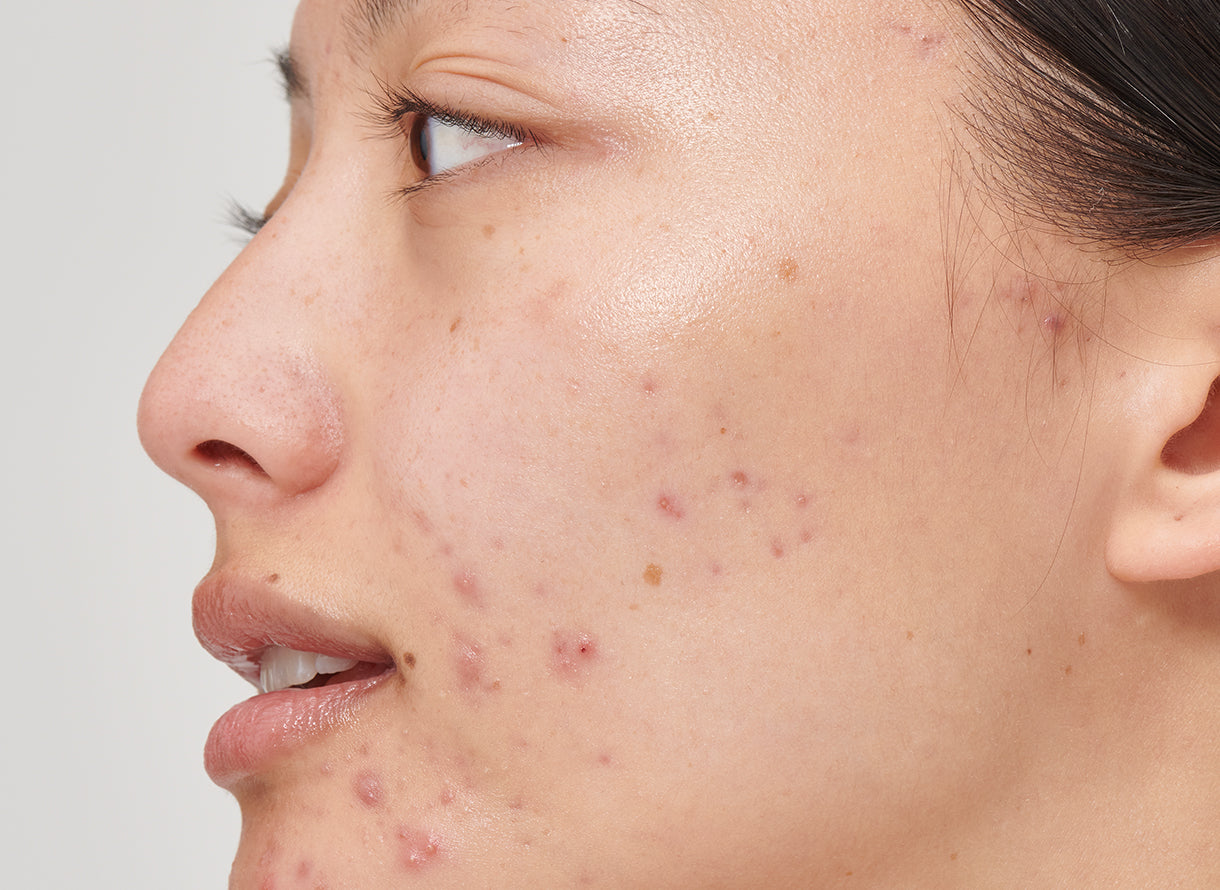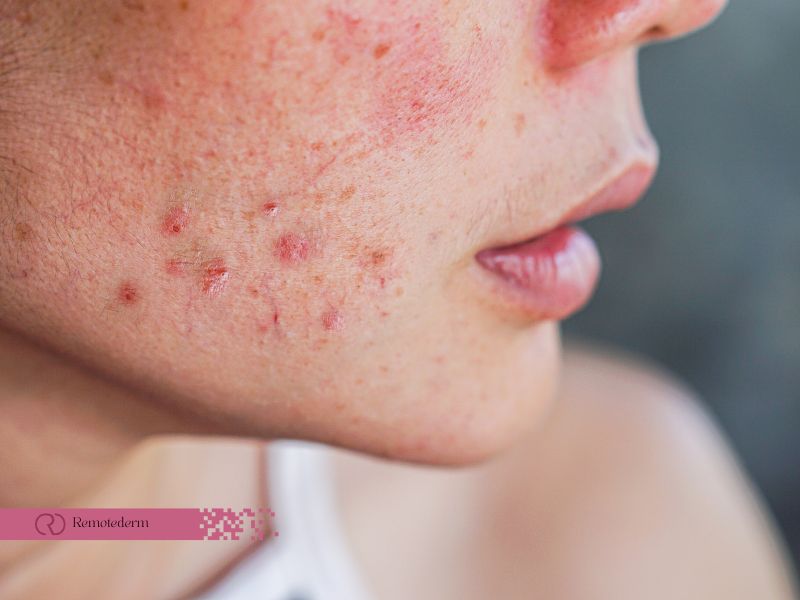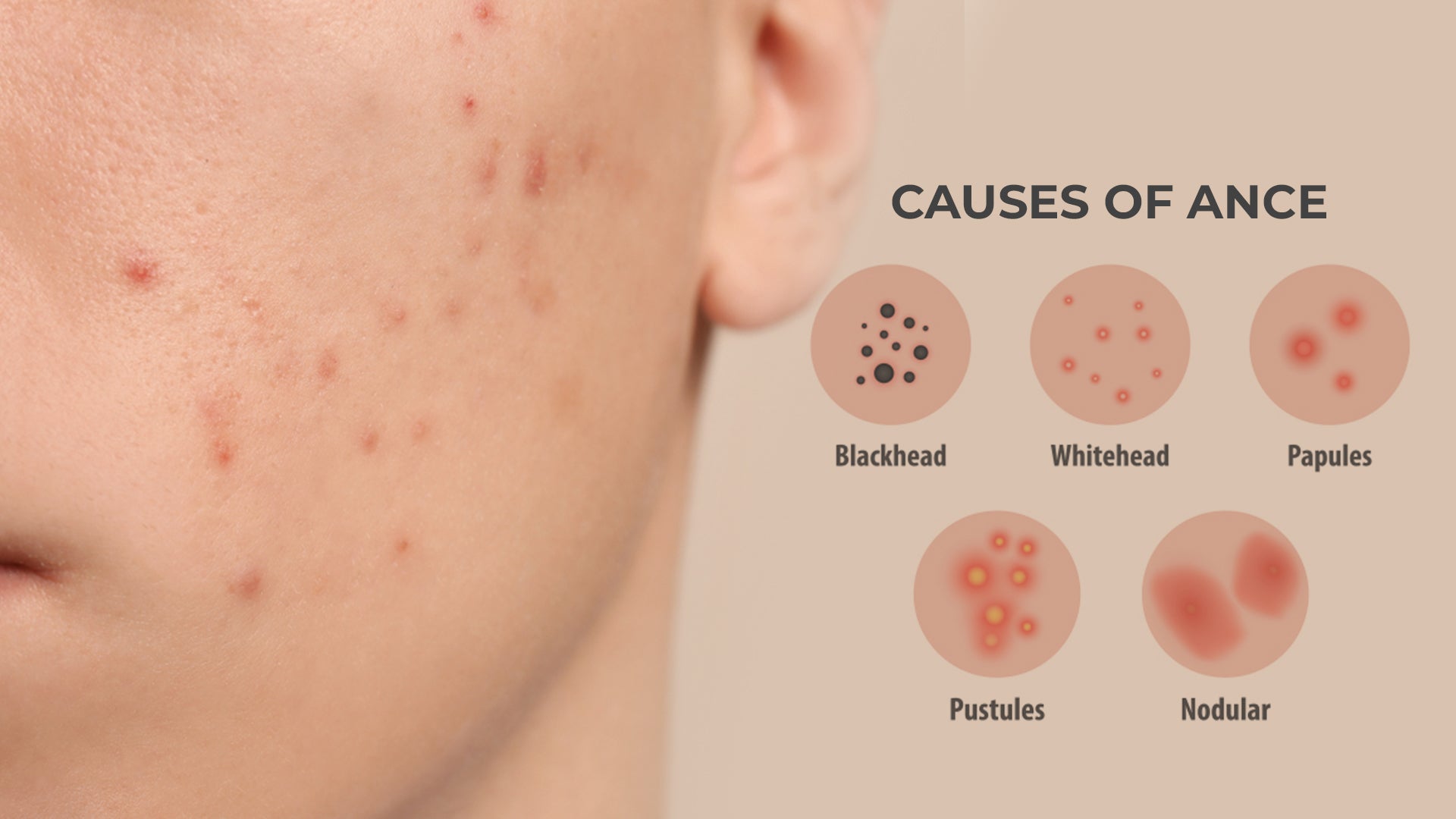Imperfections, knocks, pimples, breakouts — there are a lot of words to discuss skin inflammation. However, not all skin inflammation is something very similar. There are various sorts of skin break out contingent upon whether spots are brought about by irritation or stopped up pores. The treatment choices are unique, as well.
Be that as it may, knowing which sort of skin inflammation you have — and how best to treat it — takes a prepared eye.
1. Comedonal acne (clogged pores)

Comedonal skin break out is thought of "non-fiery," it isn't kindled to mean the skin. This sort of skin break out happens on the grounds that the pores in the skin are stopped up. Stopped up pores can happen when there's a lot of oil or microorganisms. It can likewise happen when dead skin cells don't shed as expected or in light of hormonal changes. Obstructed pores can cause pimples called whiteheads and zits.
Whiteheads
Whiteheads are otherwise called "shut comedones." These happen when your pores become obstructed the whole way through, making a little white or tissue hued knock on top of your skin.
You can't eliminate or fix whiteheads by crushing them. So don't attempt to pop them all alone. This can prompt scarring.
Blackheads
Not at all like whiteheads, clogged pores look dark on the skin's surface (the variety isn't from soil, however from melanin color and openness to air). They're known as "open comedones." This is on the grounds that the top of the pore stays open, while the remainder of the pore is stopped up. You can eliminate clogged pores by pressing them. However, once more, this isn't suggested in light of the fact that it can cause scarring.
What do whiteheads and blackheads look like?
Whiteheads and clogged pores seem to be their names sound, so they're genuinely simple to recognize.
Treatment for comedonal skin inflammation
Disposing of pimples and whiteheads starts with legitimate skin health management. The items you use on your skin and in your hair can stop up your pores. Pick items that are marked "non-comedogenic," significance they're more averse to make you breakout. Furthermore, attempt to try not to utilize pore strips on pimples since they are rough and can harm your skin, aggravating skin break out.
You can treat comedonal skin inflammation with over-the-counter (OTC) medicines, however in some cases more grounded doctor prescribed drugs are required.
Successful OTC medicines and dynamic elements for comedonal skin break out include:
Sulfur
Salicylic corrosive
Benzoyl peroxide
Low-strength adapalene (Differin)
These medicines assist remove with dead cleaning cells and overabundance oil. Sulfur, salicylic corrosive, and benzoyl peroxide can be applied straightforwardly to the skin inflammation spots or utilized as a whole facial treatment. Benzoyl peroxide is the best choice, while sulfur is the mildest on your skin. Salicylic corrosive might help forestall comedonal skin break out from returning from now on.
Adapalene is a kind of retinoid, the best treatment for a wide range of skin inflammation. It ought to be applied to the whole impacted region (not spot treatment) and can require 3 or a month to begin working. In the event that an OTC choice isn't working, you might require an original effectiveness retinoid like tretinoin (Retin-A) or trifarotene (Akleif).
2. Inflammatory acne (pimples)
Incendiary skin inflammation is the clinical name for pimples. There are two sorts of pimples — papules and pustules.
Papules
Papules are little red knocks. They structure when oil or overabundance skin cells obstructing a pore blend in with microorganisms on your skin. The tainted items in the obstructed pore pour out into the encompassing skin tissue, causing an aroused sore.
Pustules
Pustules are papules that contain discharge. They are swelling knocks with a white place and red, violet, or brown kindled skin encompassing them. They for the most part happen in groups on the chest, face, or back.
Like papules, pustules can frame when a hindered pore gets tainted. Yet, they can likewise be brought about by hormonal changes in the body.
What do papules and pustules resemble?
Papules seem to be a smooth red, violet, or earthy colored skin knock. Not at all like pustules, papules don't contain discharge. Their careful appearance can shift in light of the shade of your skin.
Treatment for provocative skin break out
Incendiary skin break out is treated with similar OTC prescriptions utilized for comedonal skin inflammation, alongside a few extra medicines, including:
Original effectiveness retinoids assist with generally speaking irritation.
Anti-toxins help dispose of C. acnes and lower irritation. Benzoyl peroxide is joined with anti-infection agents to assist with keeping microbes from becoming safe.
Conception prevention pills assist with bringing down androgen chemical levels (like testosterone), which add to skin inflammation.
Spironolactone (Aldactone) is a pulse medicine utilized "off-mark" to treat skin break out by bringing down androgen chemical levels.
What's more, as with comedonal skin inflammation, popping pimples might demolish breakouts and cause scarring, so don't attempt to crush them. Just your PCP can securely deplete pustules.
3. Nodulocystic acne
Nodulocystic skin break out is when serious breakouts happen a lot further in the skin. This kind of skin break out can be excruciating and leave super durable scars. It can influence the face, chest, back, and rear end.
Nodules
Nodular skin break out comprises of tissue shaded, brown, or red knocks. They're bigger than papules and found profound under the skin's surface. These happen when papules get more kindled and become greater and more profound. A knob is not quite the same as a pimple in that it has no discharge, so it feels hard to the touch.
Cysts
Skin break out pimples are discharge filled knocks that are red or violet in variety. They're bigger than pustules and found profound under the skin's surface. They're more excited and can be very excruciating. Growths are generally similar size as knobs, yet they're milder. This is on the grounds that knobs are discharge filled and can explode, contaminating the encompassing skin.
What does nodulocystic acne look like?

Nodulocystic skin break out happens profound under the skin, so it can cause a great deal of irritation that is difficult to contact. Past how knobs and pimples feel, there are a few visual hints to search for.
Treatment for nodulocystic acne
Since OTC medicines work on a superficial level of your skin, they aren't as viable for this kind of skin inflammation. In the event that you assume you have nodulocystic skin break out, it's ideal to see a dermatologist immediately.
Early, forceful treatment can save you from difficult breakouts, extremely durable scarring, and conceivable profound misery. Your dermatologist can assist you with dealing with nodulocystic skin inflammation with meds like:
Isotretinoin, an oral retinoid additionally sold under the brands Claravis, Myorisan, Zenatane, and others
Anti-toxins
Effective retinoids
Anti-conception medication pills
Spironolactone (Aldactone)
You could try and need numerous prescriptions to dispose of nodulocystic skin break out. Your supplier might propose infusing difficult knobs and sores with steroids to treat them straightforwardly and dispose of the aggravation.
How do you know what type of acne you have?

An effective method for determining what sort of skin inflammation you have is through the presence (or nonattendance) of breakouts that leave scars:
Comedonal skin inflammation (clogged pores and whiteheads) ordinarily mends without making an imprint.
Papules and pustules can make red or dim imprints that blur with time.
Nodulocystic skin break out is bound to leave textural scarring, marks, and pits.
Remember that you can have more than one sort of skin break out simultaneously. Also, your breakouts could change over the long run. Furthermore, skin inflammation can change during the periods of your monthly cycle.
